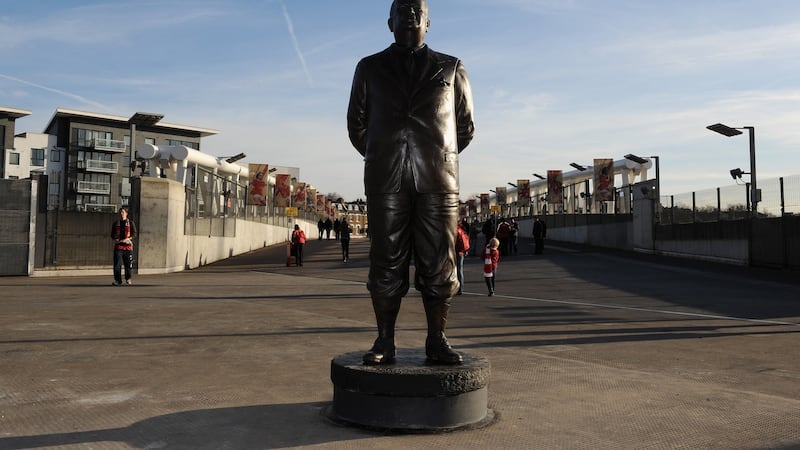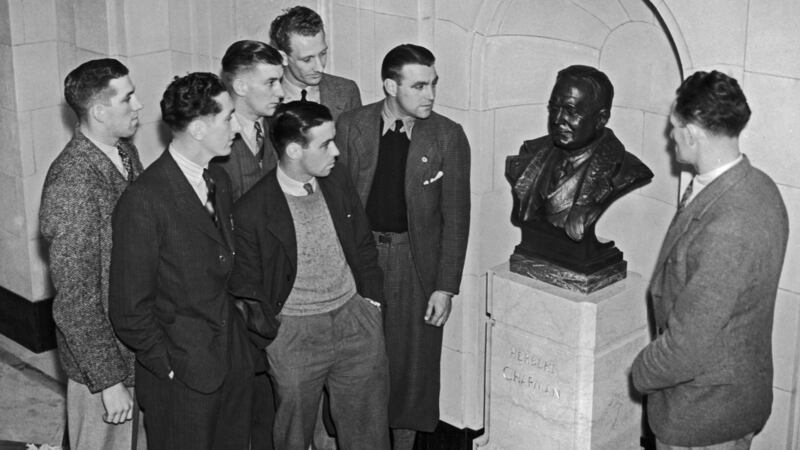He slipped away with a suddenness that shocked England, succumbing to pneumonia on January 6th, 1934, just five days after picking up "a chill" watching his Arsenal thirds playing in Guildford. Herbert Chapman was 55-years-old. Time and the ravages of World War Two might have dimmed the memory of his vivacity and influence. But as recently as 2018, after his last game as Arsenal manager – away to Huddersfield in what was a curious twist of fate – Arsene Wenger remarked: "I have a little bit of a special bond here because Herbert Chapman came from the club to our club and he is certainly our greatest manager."
In photographs he blends in so easily with his era, conservatively dressed and placid, that it is hard to fathom just how bold and futuristic his vision of football was. He believed in physical fitness, in physiotherapy and in team meetings when such ideas were considered fanciful. He wrote a newspaper column. He’s often credited as being the key proponent of the 3-2-2-3 formation but his creative vision for football was sweeping.
It was Chapman who installed the big iconic clock at Highbury, who designed the gorgeous red shirts with white sleeves after a friend turned up for a game of golf wearing a white shirt underneath a red pullover, who pioneered the use of floodlights at the training ground for evening sessions, who came up with the idea for numbering the team shirts and whose book on football, although written in the highly formal style of the decade, contains a multitude of wisdoms and advice for the football managers who would succeed him in the flash 1970s, the troubled 1980s and into the 1990s when the English game began to go supersonic.
Radical imagination
In retrospect, these improvisations have become so standard that it’s easy to presume that somebody would have thought of them sooner or later. But it took a radical imagination to envisage how football could look and then just push those ideas into being. Chapman was always thinking about the game’s possibilities and imperfections.
"Goal judges must come," he declared at one stage. "I am convinced that referees need help if they are to avoid mistakes." It sounds like a very early forecast of the debates and progression that have ultimately led to the highly contentious video action replay in contemporary football.

Chapman’s managerial career was one of escalating success and could easily have never happened. His playing career had been lengthy and pedestrian, flitting between amateurism and professionalism at clubs like Grimsby and Northampton before he enjoyed a prolific season at Spurs in 1906, scoring 11 goals. He decided to retire after the following season and return to civilian life as an engineer.
He got his first job at Northampton Town when Walter Bull, his Spurs teammate who was also due to retire, decided to play for one more season. Chapman had recommended Bull to Northampton and now ended up taking the job himself. It was that simple. Returning to Northampton as a player manager, he began to implement a basic counter-attacking system that was sufficiently successful to persuade England international Harold Fleming to tell him: 'You have something more than a team. You have a machine."
He moved from Northampton Town to Leeds City, leaving to work as a munitions factory manager during World War One and then abruptly resigning from the club in December 1918. When football returned to England for the 1919-20 season, Leeds City were investigated for illegal payments to players during wartime. Five officials, including Chapman, were banned for life. Leeds City was dissolved, leading to the creation of Leeds United.
It was officials at Huddersfield Town who helped Chapman argue against and overturn the ban and once installed as their secretary-manager, he initiated a period of extraordinary success, leading the club to their only FA Cup in 1921 and managing them to consecutive First Division league titles in 1923/24 and 1924/25. By then, Huddersfield and Arsenal were in a tug of war for his services: Arsenal called everyone’s bluff by going public to say that he was their new man. He was contracted for five years on £2,000 a year, a vast sum for a manager at that time. His Huddersfield team was so streamlined by then that their streak continued with a third – and most recent – league title the year after he left.
Chapman took over an Arsenal club that had staved off relegation and had won nothing. It took time for him to implement his vision. He made his way to Charlie Buchan's sporting goods store in Sunderland and signed him for £4,100. Davie Jack of Bolton was bought for £11,500, the first five-digit signing in English football. The signings were big and splashy and created a noise but it took several seasons for Chapman to mould the individual talent into his steadfast belief in team-based and systemic system.
Collective vision
Buchan is generally credited with strategising the famous W-M formation (3-2-2-3) which Chapman’s Arsenal teams finessed. Recent evidence suggests the tactic might have been employed in various clubs across England during the latter half of the 1920s. But Arsenal, under Chapman, came to make it their own. From the beginning, he was convinced that players had to adhere to a collective vision of the game in order to thrive as a team.
“Some years ago I decided that it would be a good thing if players could be persuaded to give as much thought to the game as they did to their billiards and cards, which, instead of being a hobby were almost a daily occupation,” he wrote in his book ‘On Football: Reflections of the game by Arsenal’s greatest manager’, published after he died in 1934.

“You would talk to them and they would say ‘yes’ to everything, but it did not follow they would carry out any promise you believed they had made. As a manager I wanted to gain their confidence and I realised that before I could do this it was necessary to dispel their nervousness. I conceived of the idea of having a diagram of the field painted on the top of the table in my office so that it would be in front of them when they came to see me. The scheme worked admirably and at Leeds, Huddersfield and the Arsenal I have found it to be of the greatest use.”
When Arsenal reached the FA Cup final of 1930, it was no surprise that his old club Huddersfield should stand in their way. The game was dubbed the North and South final by Pathé News and even then the allure of the Cup was in full swing – a big silver Zeppelin flying ceremonially over the stadium, the day graced by the presence of King George V and the novel sight of the teams parading onto the field in unison, to acknowledge the fact that Chapman had managed both clubs. Arsenal won 2-0, with the goal that sealed it emanating from an improvised quick free from the irrepressible Alex James, a gamble which Chapman disapproved of because referees habitually called back the play. This time, Arsenal got away with it.
That day marked the last time when Huddersfield would be emblematic of the power base of northern England football. The club would appear in just one FA Cup final since, losing to Preston North End in 1938. By then the great depression had begun to blitz its textile and mining industries and attendances plummeted. The glory years under Chapman became irretrievable and unrepeatable.
Art-deco stands
In the meantime, he had begun the transformation of Arsenal into a metropolitan force that would endure. He had an effortless panoramic view of how the team should perform on the pitch but also of the role of the club in its local community, overseeing the design of the dramatic and expensive art-deco stands at Highbury which announced the club’s arrival as a permanent feature in London life. He was a vocal advocate to have the name of the nearby tube station changed from Gillespie Road to Arsenal, which happened in 1932. In his nine years at Arsenal, he delivered the first three of 13 league titles (they swept to their fourth in the season that he died) and the first of 13 FA cups. He engineered the idea of Arsenal as a major English club and his fingerprints are all over many of the evolutions of the game.
Little wonder then that at the unveiling of the statue of Chapman outside the Emirates stadium in 2011, Wenger spoke of his admiration for the man who had preceded him in the turbulent 1930s.
“You need, historically, people who have a vision and the strength to push it through,” the Frenchman said, “to be ahead of people’s minds and to have the strength to think of the future.”
There's a brilliant short clip of the moment, the gaunt and modernist figure of Wenger beside the bronzed likeness of a heavyset engineer from Victorian Rotherham fired with a dreamy streak and looking unblinkingly towards the future.











